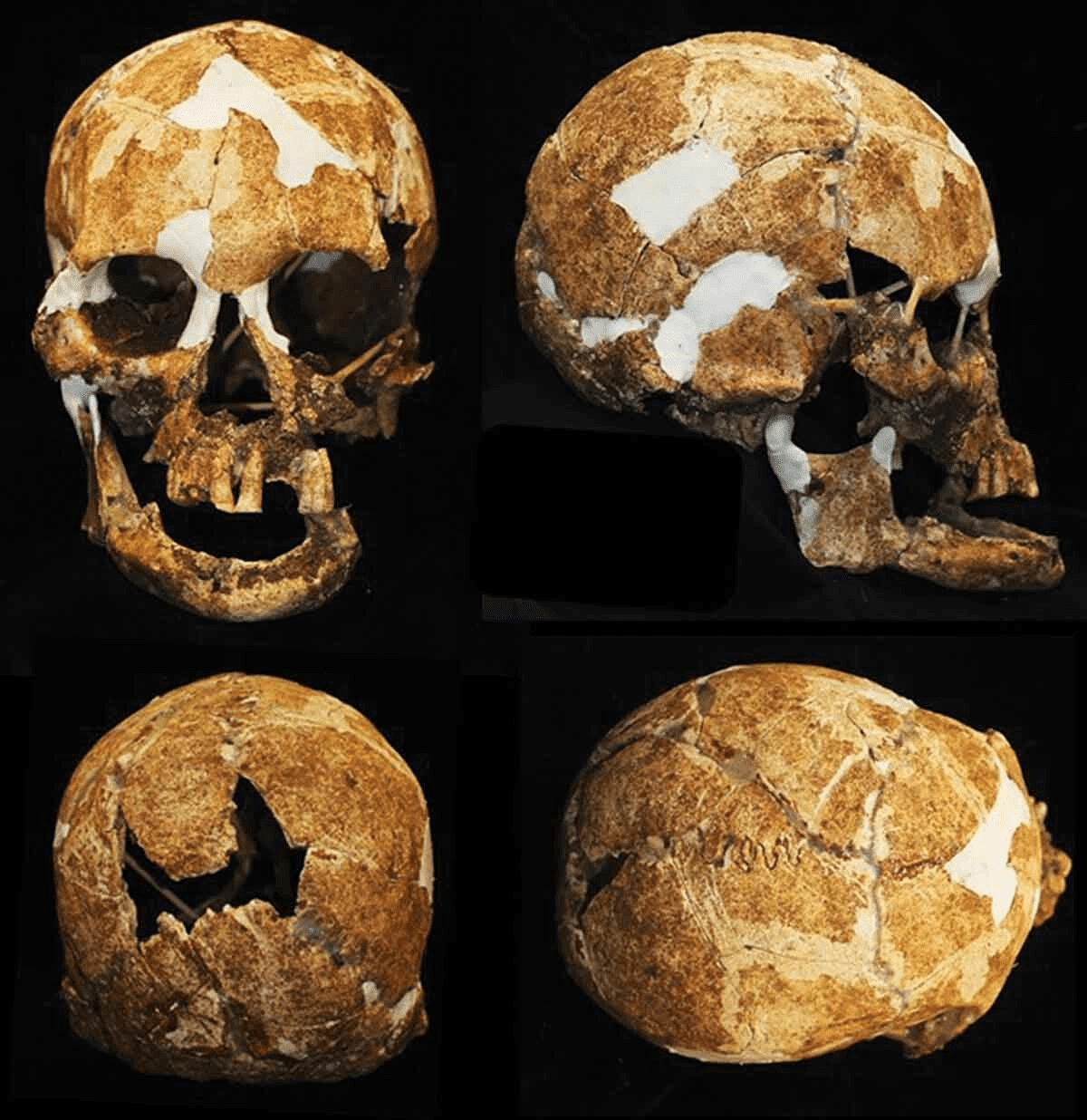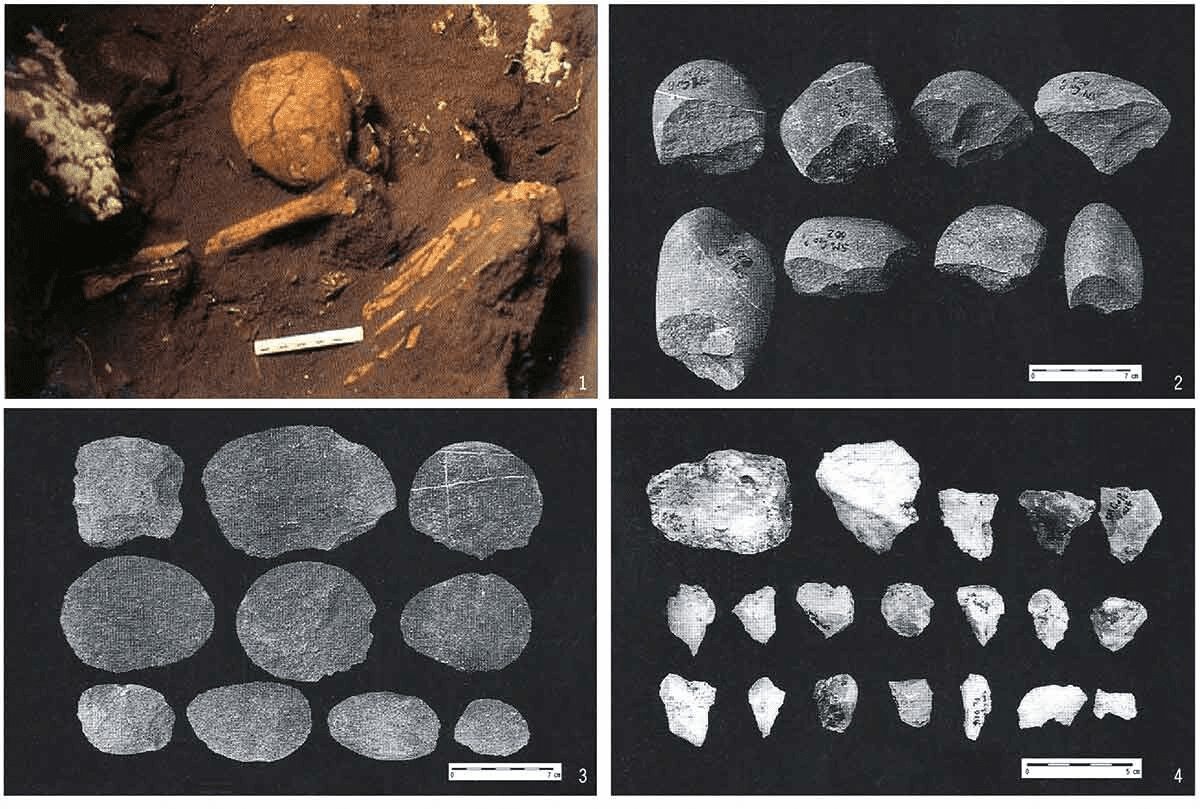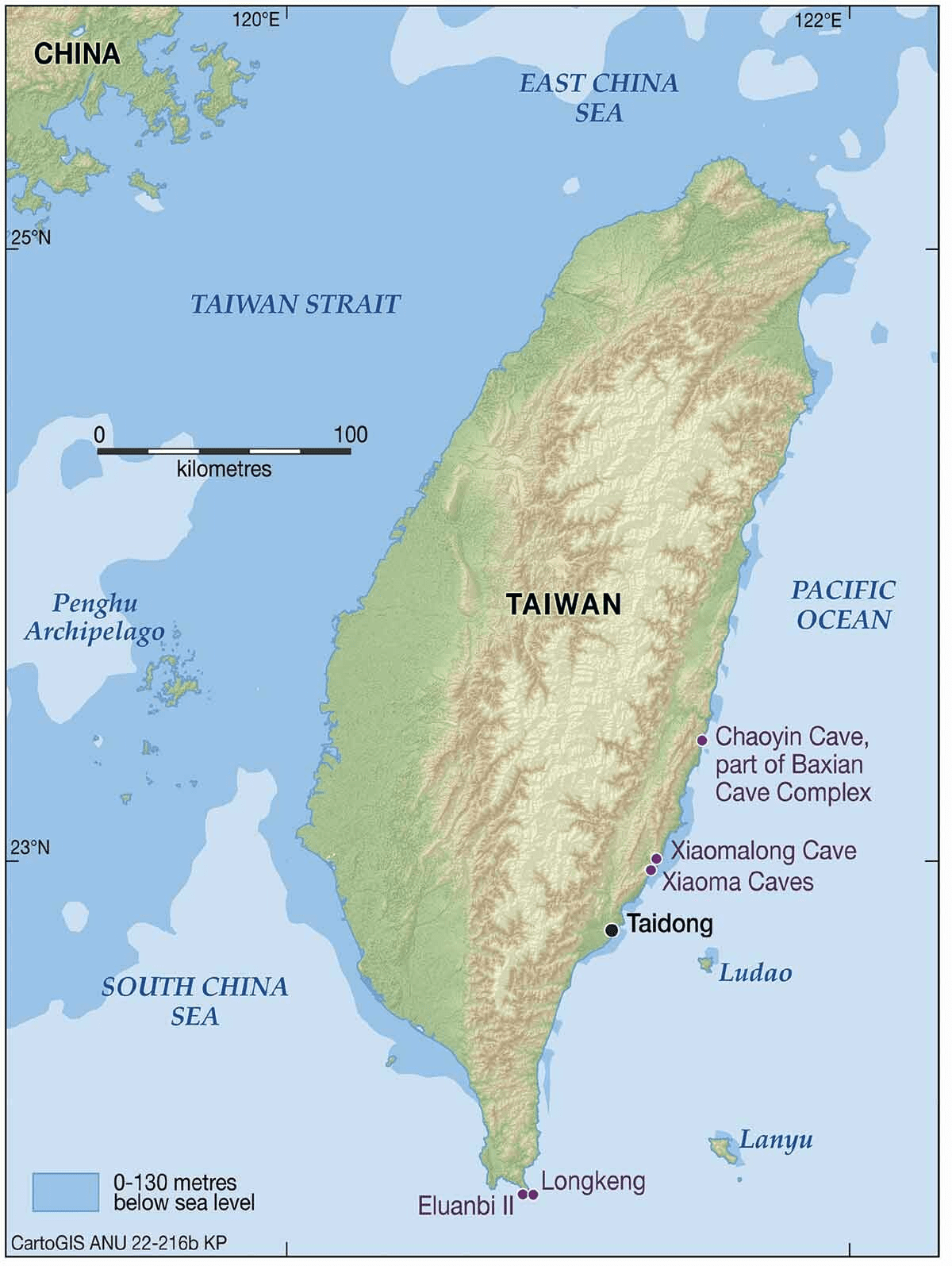Around 6,000 years ago Taiwan was settled by Austronesians, who brought with them Neolithic technology and still make up around 2 percent of the island’s population. However, 15 of the 16 Austronesian groups on the island have stories of small, dark people already living in the island’s forests and perhaps surviving alongside the Austronesians until quite recently. The discovery of a skull confirms the tales and helps place the lost people in the human family tree.
The presence of stone tools, some of them dating back 30,000 years, proved the Austronesians’ stories were not just the equivalent of European myths of fairies or elves. However, until now scientists had no way of knowing anything about these first inhabitants.
The discovery of a skull and partial skeleton in the Xiaoma Caves on Taiwan’s east coast changes that. In World Archaeology, Dr Hsiao-chun Hung of the Australian National University explores what the remains of one individual can tell us.

The Xiaoma skull seen from all angles. 13 measurements were used to compare it with skulls from other populations. Image Credit: Hirofumi Matsumura
Austronesian groups held widely differing views of the people they lived beside. Many describe them in hostile terms and have stories of fighting. However, at least four groups tell tales of intermarrying with the so-called “little black people” and one group, the Saisiyat continue to hold ceremonies in honor of those they call the Ta’ai, who they consider their teachers.
Varied as these attitudes are, all the groups have common physical descriptions of people with dark skin, small body sizes, and frizzy hair living in the forested mountains, often in caves.
The skull found at Xiaoma is consistent with those accounts. It was in a layer approximately 5,900 years old, around the time the Austronesians were arriving. However, its features make it clear it belonged to someone with a different heritage.
Not only is the skull small, but 13 measurements of its shape most closely match those of the Negrito people of the Philippines, followed by those of the Andaman Islands. During the Ice Age, Taiwan was connected to both the mainland and the Philippines and people probably arrived on foot. “So far, though, no site in Taiwan has been dated between 15,000 and 6,600 years ago,” Hung told IFLScience, making it possible the Xiaoma people’s ancestors arrived by boat on an island whose original inhabitants were gone.
The authors conclude the bones belonged to a female, who was buried in a squatting position found in hunter-gatherer graves in southern China and Southeast Asia, strengthening the connection.
Hung told IFLScience that although Taiwan’s pre-Neolithic population density was probably low, “The rarity of findings of human remains from this period has been a reflection of the rarity of the preservation in ancient sites after so many thousands of years.” She attributes this primarily to the climate. Hung added archaeologists have not looked hard for older burial sites, and hope to rectify this.
Hung told IFLScience that around 7,000 years ago flake tools that resemble those used by hunter-gatherers elsewhere in South-East Asia arrived in Taiwan, possibly through contact with fishermen from Luzon. The Taiwanese versions are smaller and benefited from the high-quality stone available.

The skull and parts of the skeleton in their original location and stone tools from the same layer of Cave number 5 Xiaoma. Image Credit: Hung et al/World Archaeology
Reports from the Qing indicate the original inhabitants were surviving as a distinct people until two centuries ago. Even today they may not be entirely lost. Genetic analysts have contacted Hung and told her they believe there is evidence for their DNA among modern Austronesians.
The cave in which the skull was found sits 800 meters (half a mile) from the sea, but co-author Dr Mike Carson of the University of Guam told IFLScience, “[Taiwan’s] eastern coastal mountain range is among the fastest uplifting geological formations in the world.” When the individual was buried there the site would have been closer both to the sea and a nearby river, offering the inhabitants both freshwater and a food source close to hand.

Map of Taiwan, showing the Xiaoma Caves where the skull was found and other important cave complexes. Image Credit: Australian National University
The study is published in World Archaeology (open access).
Source Link: Skull Confirms Taiwanese Legends Of Ancient Peoples Who Preceded The Austronesians